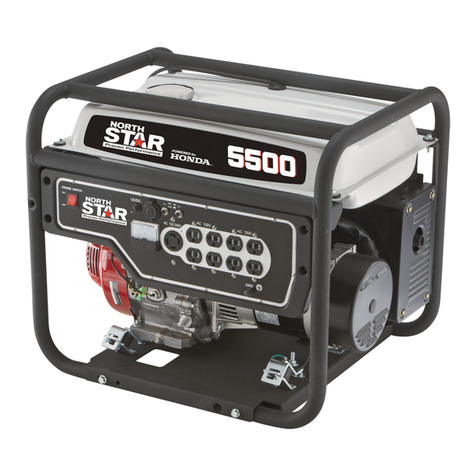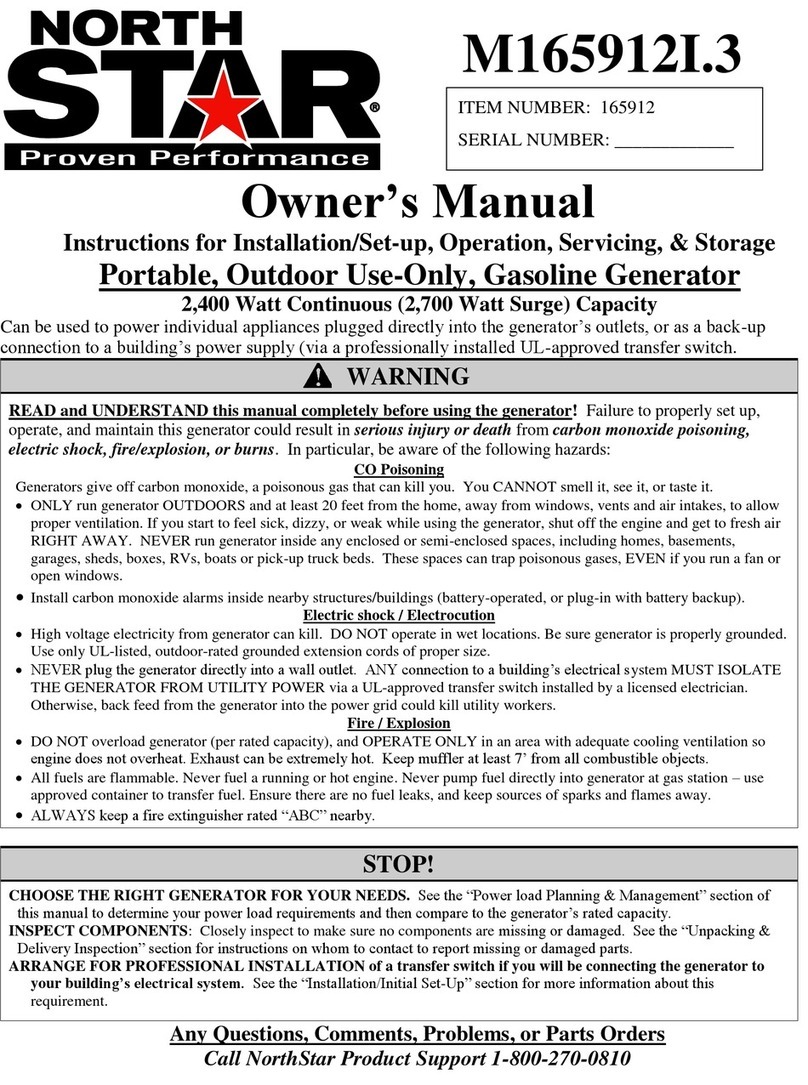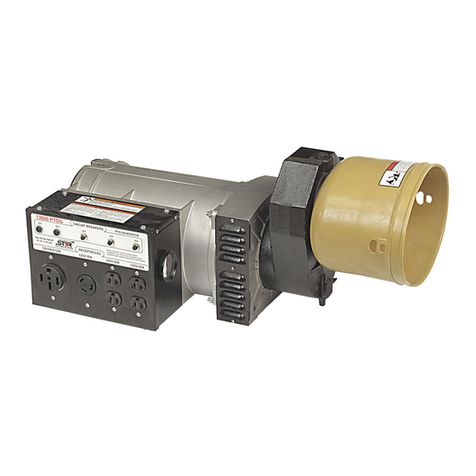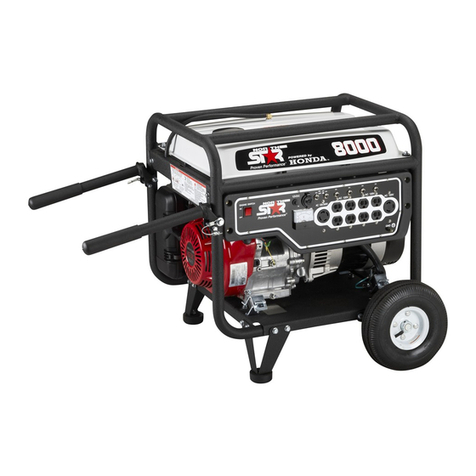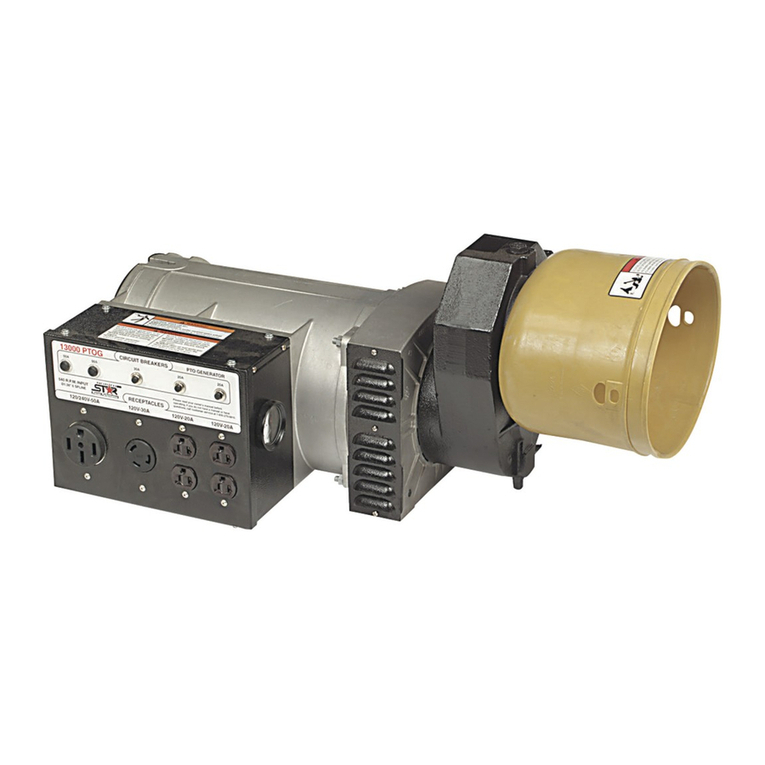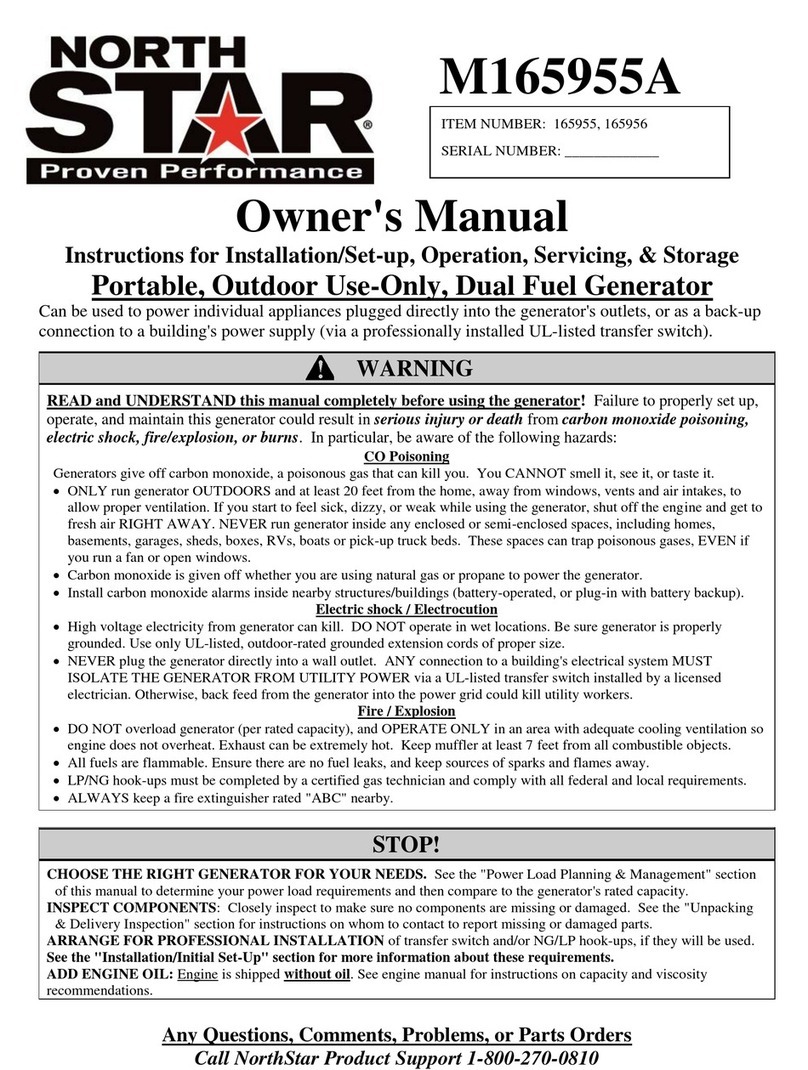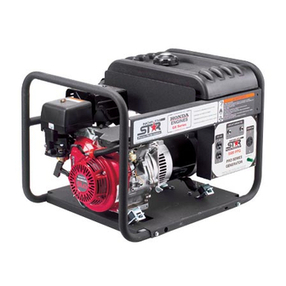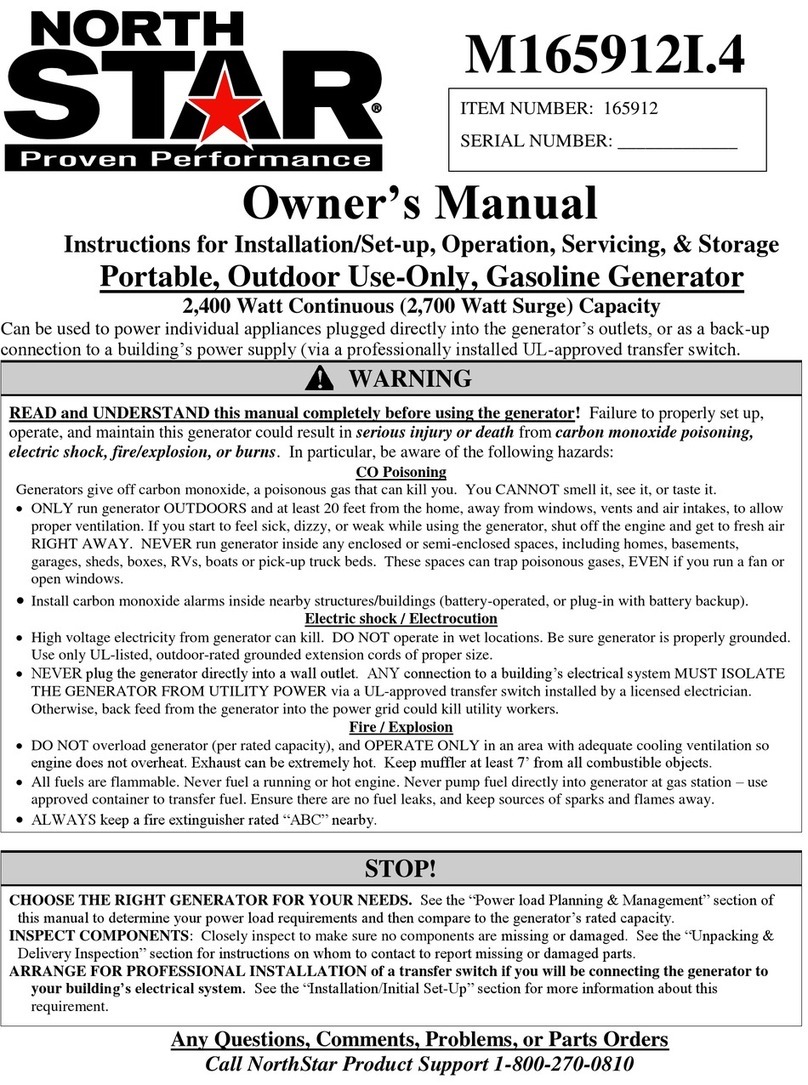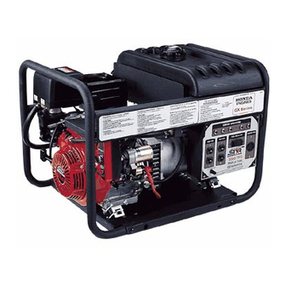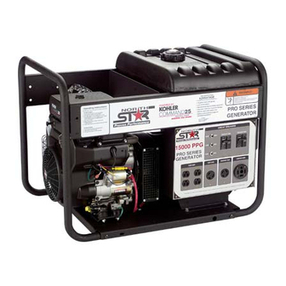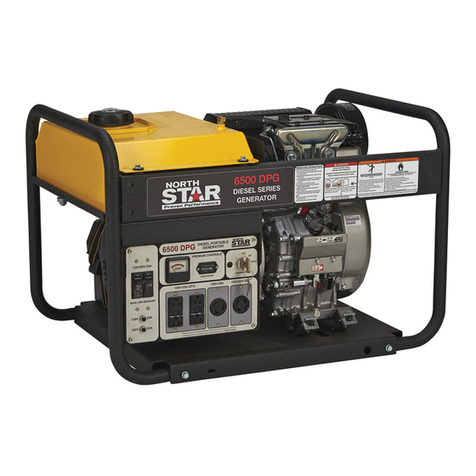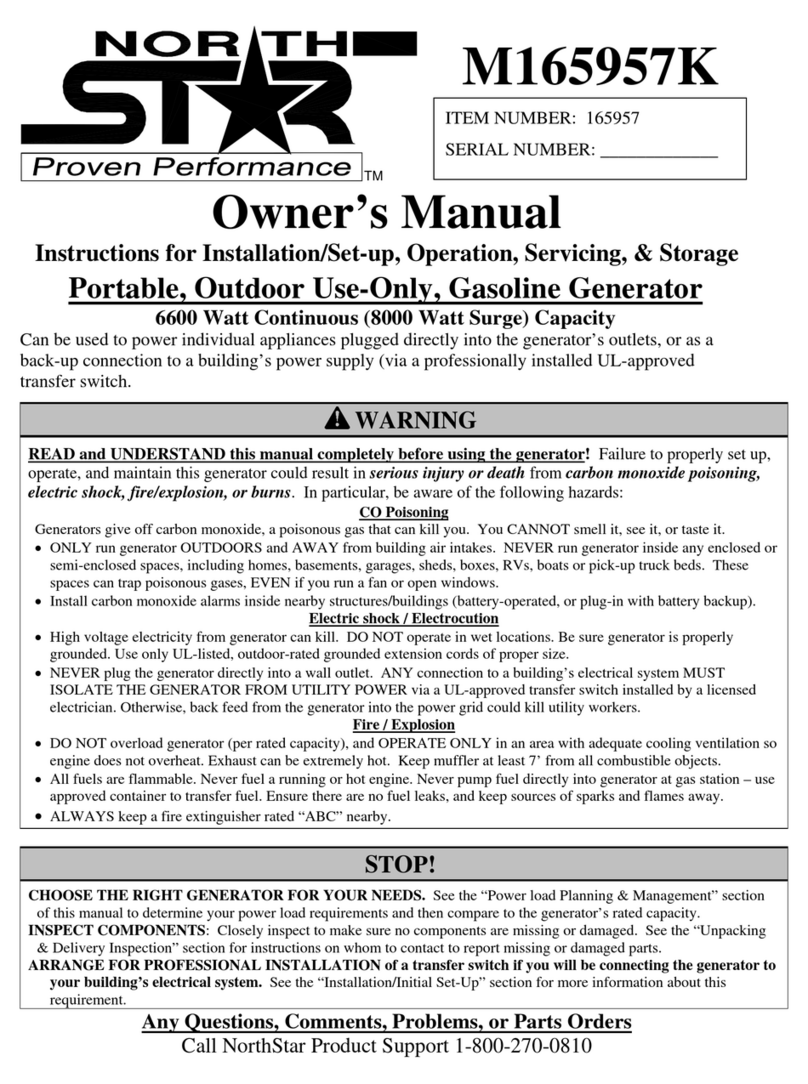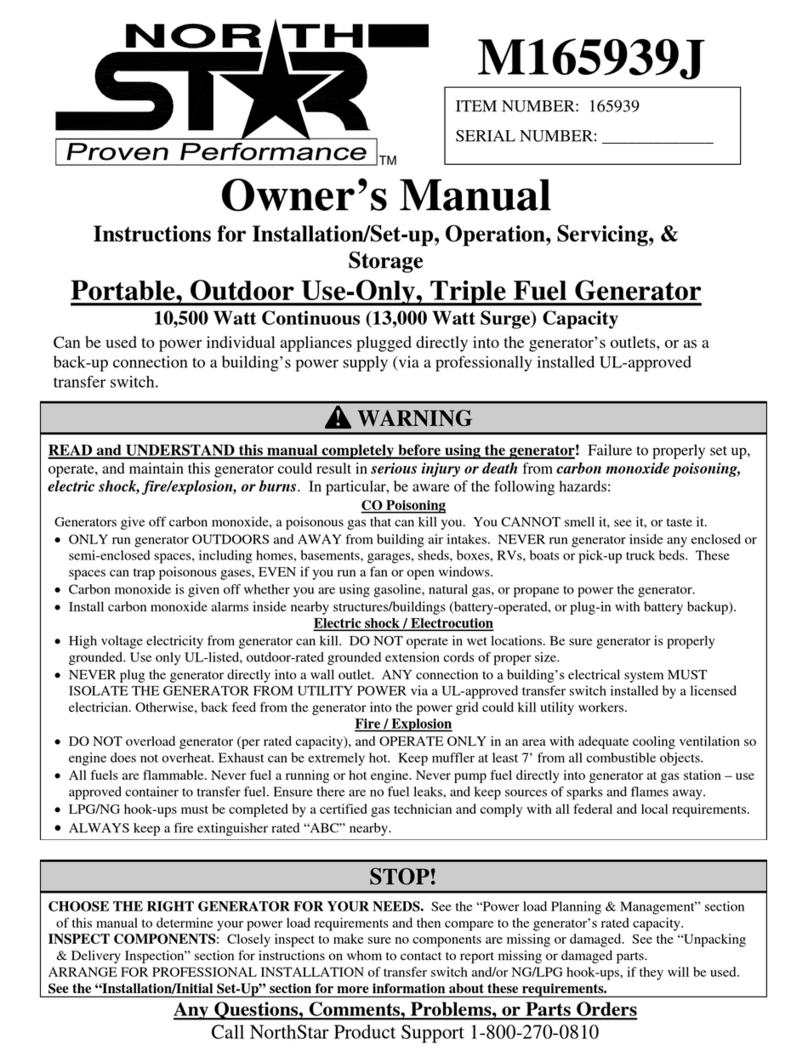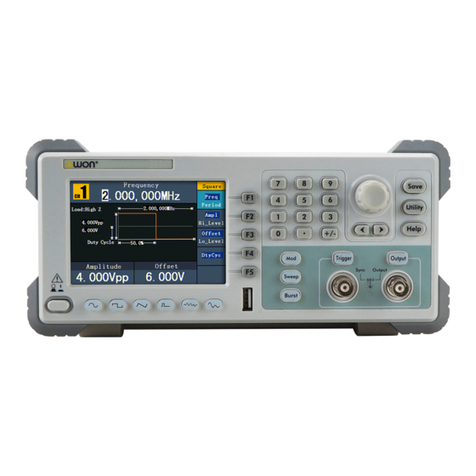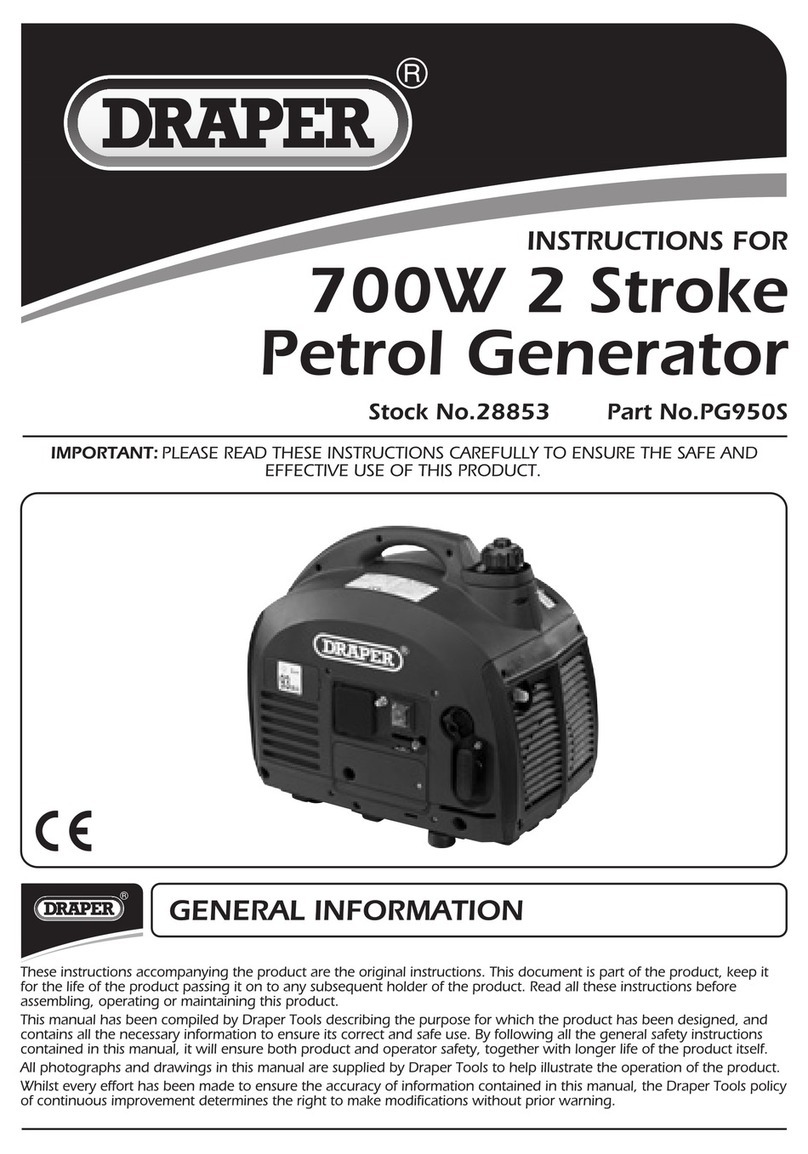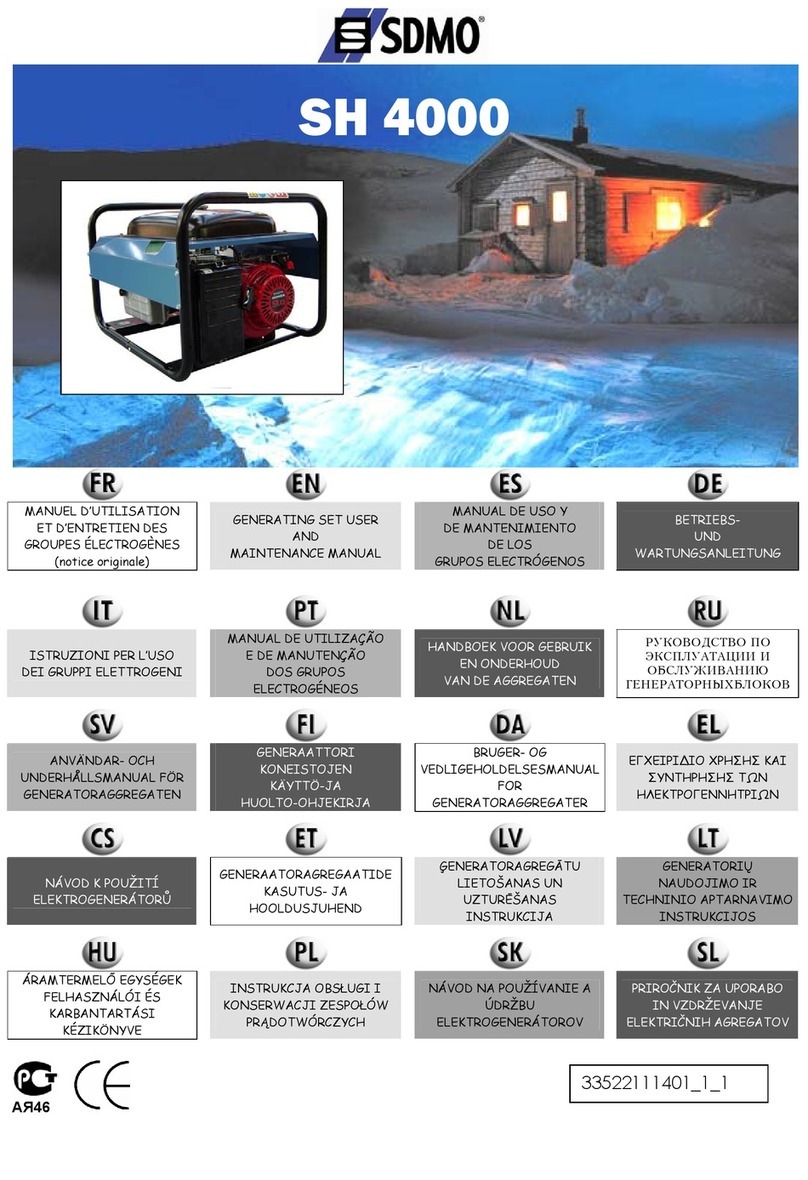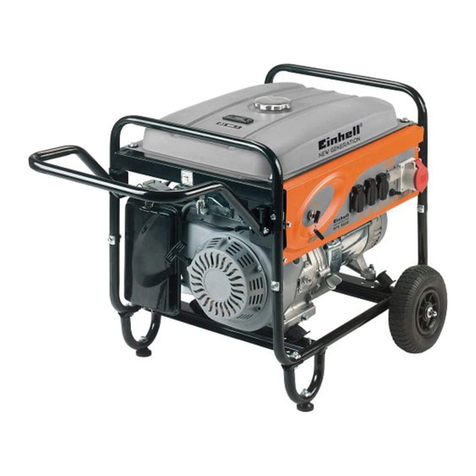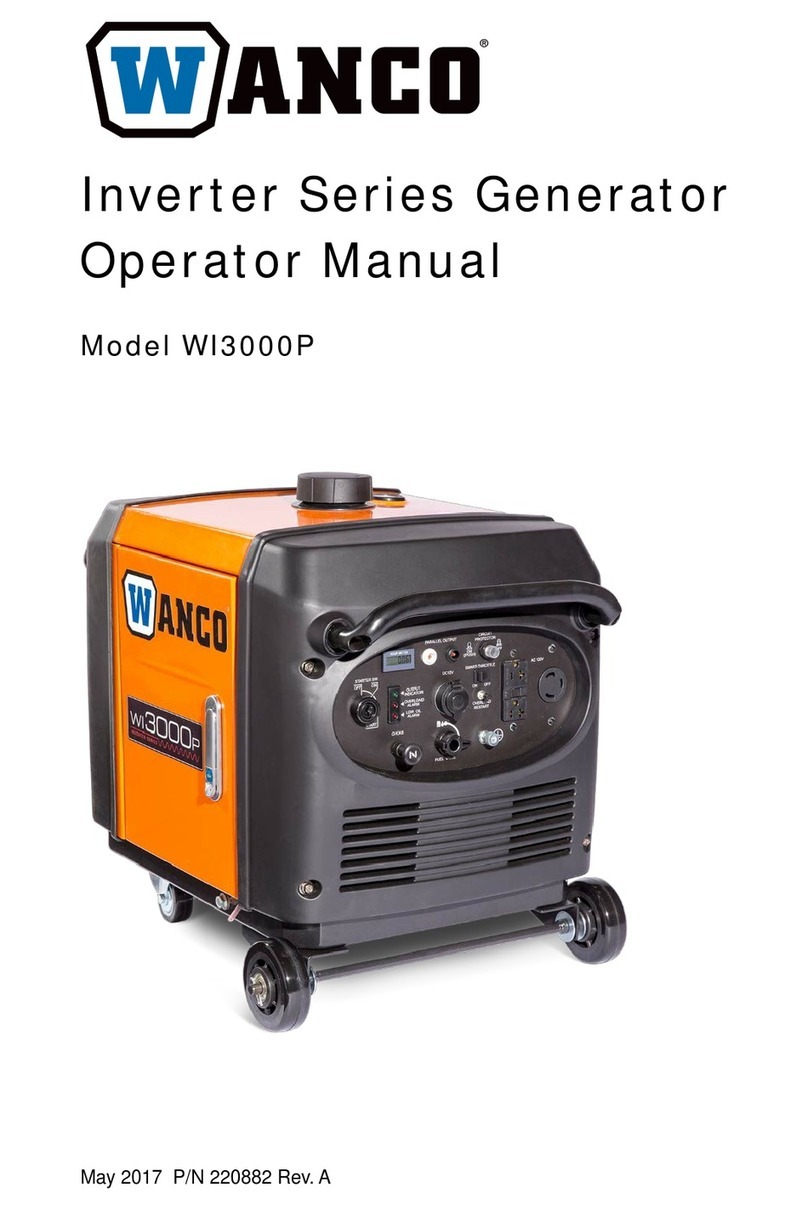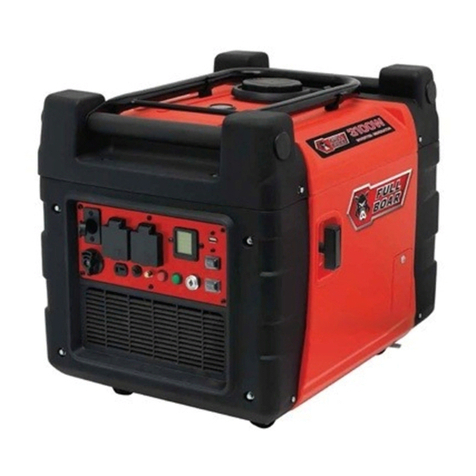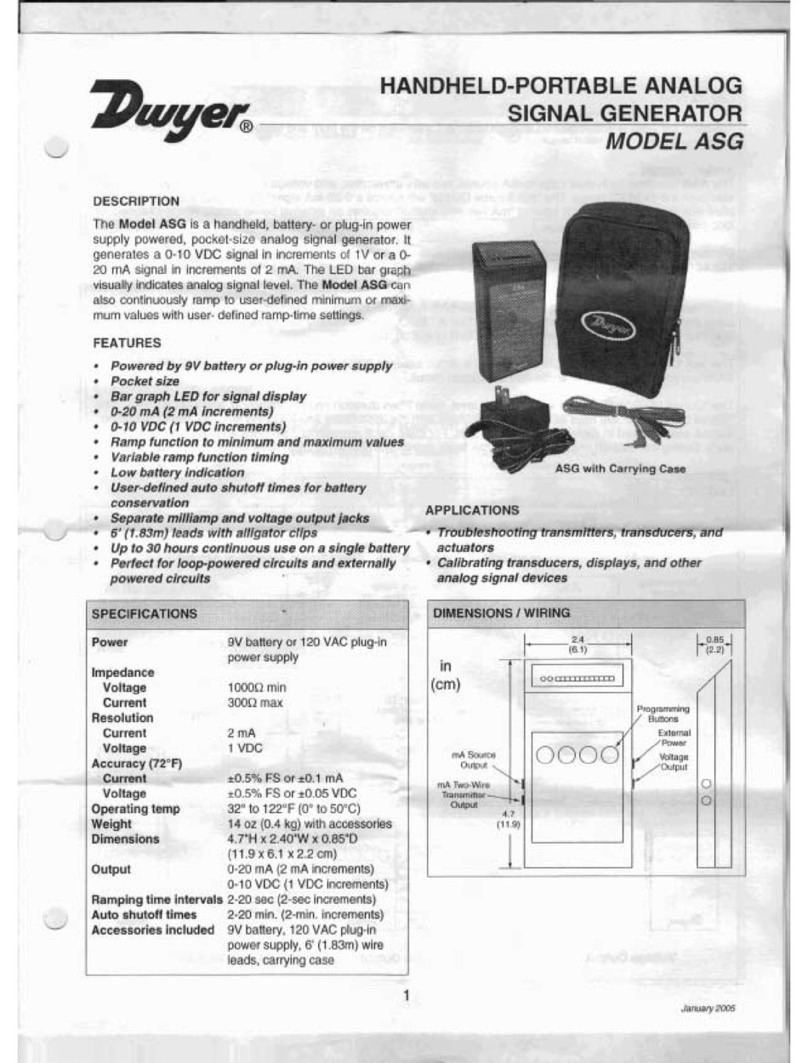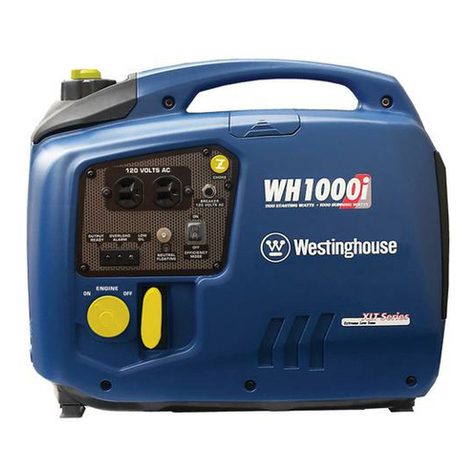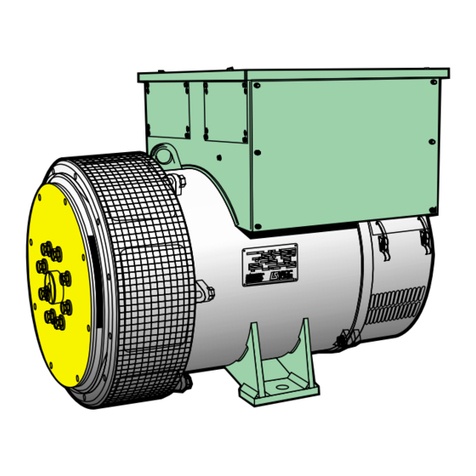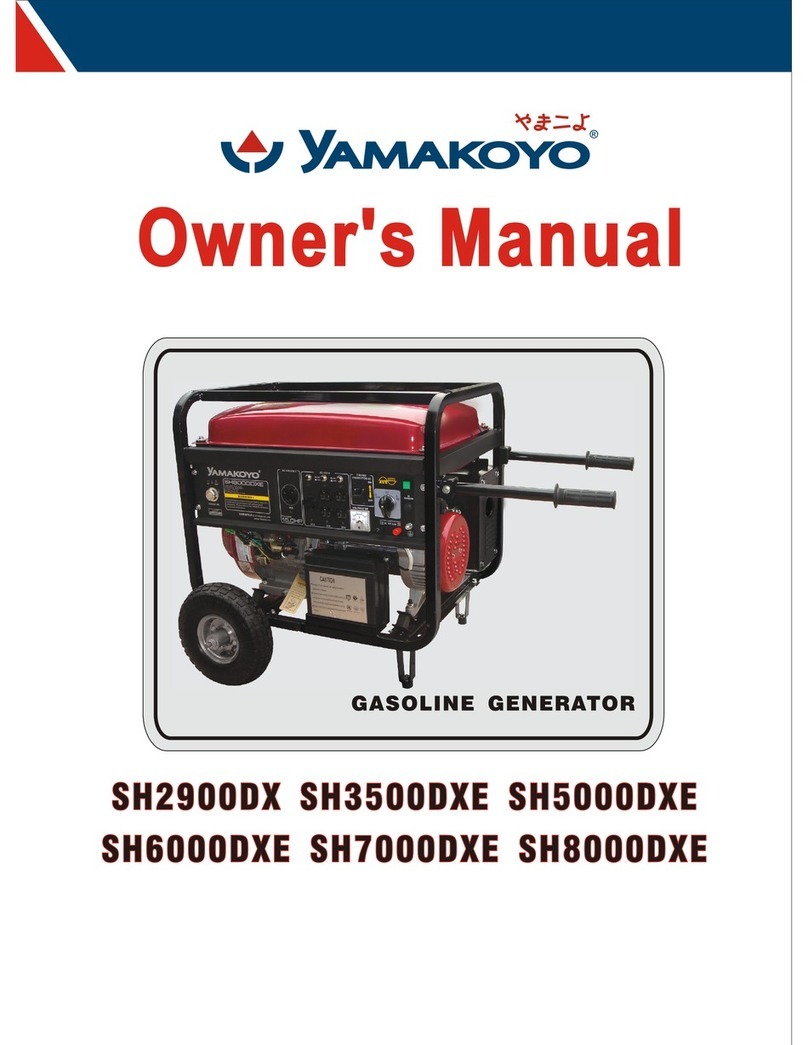
6
INSTALLATION
OUTDOORS: Choose a location where the
generator will not be exposed to rain, snow or direct
sunlight. Position the generator on secure, level
ground soit willnottip or slide down a hill. Place the
generator so that the exhaust fumes will not be
directedtowardspeople.
The installation site must be free from water,
moisture,or dust. All electrical components should be
protected from excessive moisture or the insulation
system will deteriorate and result in grounding or
shorting out thegenerating system.
Foreign matters, such as dust, dirt, sand, lint, or
abrasivematerialscan cause damage tothe generator
head andengine if allowedintoitscooling system.
NEVER install your generator inside confined
areas. Insideinstallation can cause health hazards or
death.
DANGER Remember,exhaust fumesare
deadly carbon monoxide gas, and must be vented to
theoutside wherethere are no people. Cooling air of
sufficient amounts must be allowed to flow in and
exhausted out to ensure proper cooling of the engine
and generator head.
LOAD APPLICATION
Itisimportanttodetermine the total electrical load
beforeitisconnected to thegenerator. Thetwomajor
factorsin determining the lifeof a generator head are:
heat build up, caused by overloading the generator;
and corrosive contaminants that attack the wiring
insulation. If the generator is overloaded, the wires
become excessively hot and cause the insulation to
break down, reducing its ability to resist corrosive
contaminants. Over time the effectiveness of the
insulation iseliminatedanda dead short can result.
Always compare the generator nameplate data
with that of the equipment to be used to ensure that
watts, volts, amperage, and frequency requirements
are suitable for operating equipment. The wattage
listed on the equipment nameplate is its rated output.
However, some equipment may require three to ten
times more wattage than its rating on the nameplate,
as the wattage is influenced by the equipment
efficiency, power factor and starting system. NOTE: If
wattage is not given on equipment nameplate,
approximate wattage may be determined by
multiplying nameplate voltage by nameplate
amperage.
VOLTS X AMPS = WATTS
Example: 120V X 5A = 600W
When connecting a resistive load such as
incandescentlights, heatersor common electric power
tools, a capacity of up to the generator full rated
wattage outputcanbe used.
When connecting a resistive-inductive load such
as a fluorescent or mercury light, transformers or
inductive coils, a capacity of up to 0.6 times the
generator’sfull rated output canbe used.
Always allow the generator to reach operating
speed before a loadisapplied.
STARTING ELECTRICMOTORS
Electric motors require much more current (amps)
to start than to run. Some motors, particularlylow cost
split-phase motors, are very hard to start and require 5
to 7timesmore currentto start than to run. Capacitor
motors are easier to start and usually require 2 to 4
times as much current to start as to run. Repulsion
Induction motors are the easiest to start and require
1.5to2.5timesasmuchto start asto run.
Most fractional motors take about the same
amount of current to run them whether they are of
Repulsion-Induction (RI), Capacitor (Cap), or Split-
Phase (SP) type. The following chart shows the
approximate current required to start and run various
types and sizes of 120 volt 60 cycle electric motors
under variousconditions.
120V,60 HzMotors Starting Amps
Hp motor Running
Watts RI type Cap type SP type
1/6 525 7-11 9-18 16-22
1/4 700 9-15 12-23 22-32
1/3 875 11-18 14-29 26-35
1/2 1175 15-25 20-40 NA
11925 24-40 32-64 NA
1 1/2 2400 30-50 40-80 NA
22900 36-60 48-96 NA
3 4075 51-85 68-136 NA
56750 84-140 112-224 NA
The figures given above are for an average load
such as a blower or fan. If the electric motor is
connected to a hard starting load, such as an air
compressor, it will require more starting current. If it is
connected to alight load, such as a power saw, it will
require less starting current. The exact requirement
will also vary with thebrand ordesign of themotor.
Generators respond to severe overloading
differently than the powerline. When overloaded, the
engineisnotable tosupply enough power to bring the
electric motor up to operating speed. The generator
responds to the high initial starting current, but the
engine speed drops sharply. The overload may stall
theengine. If allowed to operate at very low speeds,
the electric motor starting winding will burn out in a
short time. The generatorhead winding might also be
damaged.
